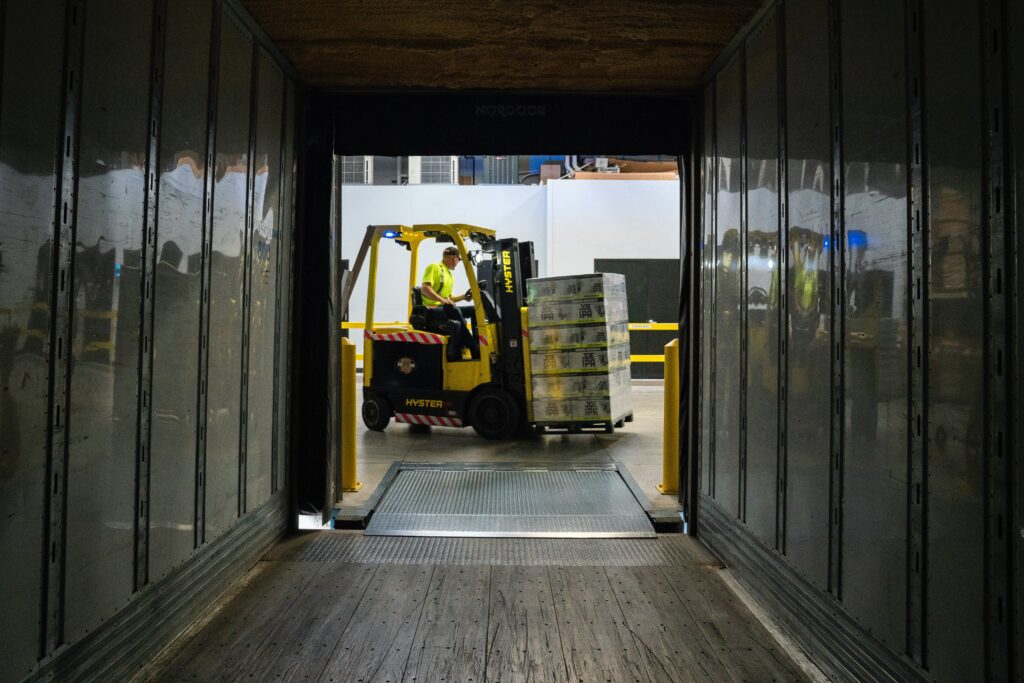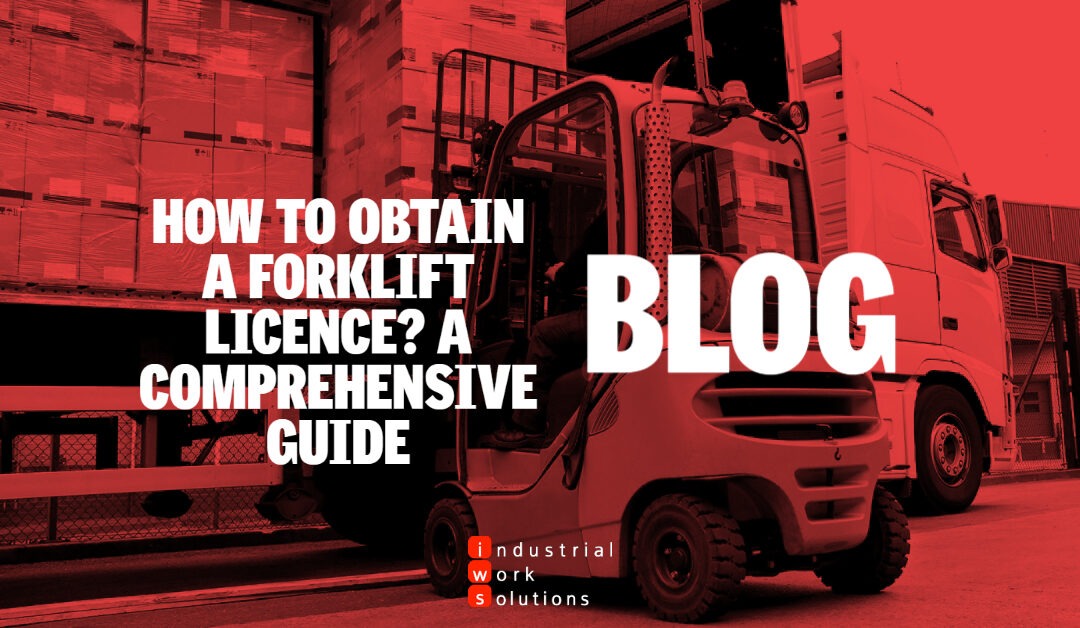If you’re considering a career as a forklift truck (FLT) operator in the UK, obtaining a forklift license is crucial. This guide will provide you with a step-by-step overview of the process to help you acquire your FLT license and pave the way for exciting job opportunities in the technical and industrial sectors.
Understanding the Importance of an FLT License:
Operating a forklift requires specialized skills and knowledge to ensure safety and efficiency in the workplace. Obtaining an FLT license demonstrates your competency and commitment to maintaining a safe working environment. Employers prioritize candidates with the appropriate license, giving you a competitive edge in the job market.
Researching Approved Training Providers
To begin your journey toward obtaining an FLT license, start by researching reputable training providers in your area. Look for providers that offer certified forklift training programs recognized by industry standards.
The Health and Safety Executive (HSE), is the regulatory authority in UK, The HSE acknowledges only these six accrediting companies, namely:
- Association of Industrial Truck Trainers (AITT) – www.aitt.co.uk
- Independent Training Standards Scheme and Register (ITSSAR) – www.itssar.org.uk
- Lantra Awards – www.lantra-awards.co.uk
- National Plant Operators Registration Scheme Ltd – www.npors.com
- Road Transport Industry Training Board (RTITB) Ltd – www.rtitb.co.uk
- Construction Industry Training Board, (CITB) – www.constructionskills.co.uk.
When enrolling for a course, make sure the course is accredited by one of these bodies.
These training courses will equip you with the necessary theoretical and practical skills required for operating a forklift safely.
Selecting the Right Forklift Training Course

Enroll in Novice Training Course, designed for an absolute beginners and people without any prior knowledge of driving lift truck. These will deliver basic skills and capability to perform work safely and efficiently. This course takes about 3 to 6 days to complete.
Afterwards, consider the specific type of forklift you are interested in operating, such as counterbalance, reach, or rough terrain. Look for training courses that focus on the type of forklift you wish to specialize in. Ensure that the course covers essential topics, including forklift operation, load handling, safety regulations, and maintenance.
In the UK, there are various types of forklift trucks designed to cater to different industrial needs. Here is a list of commonly used forklift types along with their brief descriptions:
- Counterbalance Forklifts: Counterbalance forklifts are the most common type and feature a weight distribution system to counterbalance the load being lifted. They have two forks at the front and no outrigging arms, allowing them to easily maneuver in tight spaces. Counterbalance forklifts are versatile and suitable for a wide range of indoor and outdoor applications.
- Reach Trucks: Reach trucks are designed for warehouse and narrow aisle operations. They have extendable forks that can reach into racks, enabling operators to stack pallets at greater heights. Reach trucks are known for their maneuverability and can work in narrow aisles with ease.
- Rough Terrain Forklifts: Rough terrain forklifts are built for outdoor use on uneven surfaces, construction sites, and agricultural environments. These forklifts feature larger wheels, higher ground clearance, and sturdy construction to handle rough terrain and off-road conditions. Rough terrain forklifts often have telescopic booms for increased lifting capacity and versatility.
- Electric Forklifts: Electric forklifts are powered by rechargeable batteries, making them an eco-friendly alternative to internal combustion engine forklifts. They produce zero emissions, operate quietly, and are well-suited for indoor applications. Electric forklifts are available in various configurations, including counterbalance, reach, and pallet trucks.
- Pallet Trucks: Pallet trucks, also known as pallet jacks or pump trucks, are used for horizontal transportation of palletized loads. They have forks that slide under pallets and are manually or electrically operated. Pallet trucks are commonly used in warehouses, distribution centers, and retail environments for efficient material handling.
- Order Pickers: Order pickers are designed for order fulfillment in warehouses and distribution centers. These forklifts have an elevated platform with controls that allow operators to pick items from racks at different levels. Order pickers are especially useful when handling small or light items for order assembly.
- Articulated Forklifts: Articulated forklifts, also known as flexi or narrow aisle forklifts, are ideal for high-density storage and narrow aisle operations. They feature a unique design with a pivoting mast that allows the forklift to articulate, providing increased maneuverability in confined spaces. Articulated forklifts are commonly used in warehouses with narrow aisles, maximizing storage capacity.
- Multi-directional Forklifts: Multi-directional forklifts are designed to move loads in multiple directions, offering greater flexibility and maneuverability. They have wheels that allow movement in forward, backward, and sideways directions, making them suitable for long and bulky loads. Multi-directional forklifts are commonly used in industries such as timber, steel, and manufacturing.
If you already own a license you can also opt-in for a conversion course which will expand your ability into driving other kinds of trucks that you are not familiar with.
After obtaining your license you have to participate in a refresher course once every three years. This course will update you on present HSE regulation and practices and will make sure that your knowledge is current.
Enrolling in Forklift Training
Once you have identified a suitable training provider and course, reach out to them to enroll in the program. Check the prerequisites for enrollment, such as age requirements and physical fitness criteria. In the UK you need to be at least 17 years old to be accepted into training. In more dangerous workplaces such as ports, an operator must be 18 due to increased risks of the work area. You also need to be in optimum physical and health condition and might be required to undergo a medical exam by your future employer. Many training providers offer flexible training schedules to accommodate working professionals, allowing you to balance your learning with other commitments.
Attending Classroom and Practical Training Sessions
The FLT training program typically consists of both classroom and practical sessions. Classroom sessions cover theoretical aspects such as safety guidelines, regulations, and best practices. Practical sessions provide hands-on training in operating a forklift under the supervision of experienced instructors. Be attentive during training, ask questions, and practice your skills diligently.
Preparing for the Written and Practical Examinations
After completing the training, you will need to pass both written and practical examinations to obtain your FLT license. Revise the course materials, study relevant legislation, and familiarize yourself with the forklift’s controls, functions, and safety procedures. Practice operating the forklift to build confidence and enhance your skills.
Schedule a convenient date to sit for the written and practical examinations. The written exam assesses your theoretical knowledge, while the practical exam evaluates your ability to operate the forklift safely and efficiently. Stay calm, follow instructions, and apply the skills you learned during training.
Receiving Your FLT License
Upon successfully passing the examinations, you will receive your FLT license. This license validates your qualifications and allows you to legally operate a forklift in the UK. Keep your license updated and ensure compliance with any renewal requirements to maintain its validity.
Are Foreign Forklift Licenses Valid?
If you are coming from abroad, sadly your forklift licence won’t be valid and you will have to enroll on the forklift training. However, you can use your forklift license as a proof of experience whilst seeking employment.
Become a Forklift Driver
Obtaining an FLT license is a significant milestone on your path to a rewarding career as a forklift operator. By following this comprehensive guide, you are equipped with the necessary steps to acquire your license and pursue job opportunities in the technical and industrial sectors. Remember, continuous learning and adherence to safety protocols are essential for a successful and fulfilling career as an FLT operator.


Recent Comments